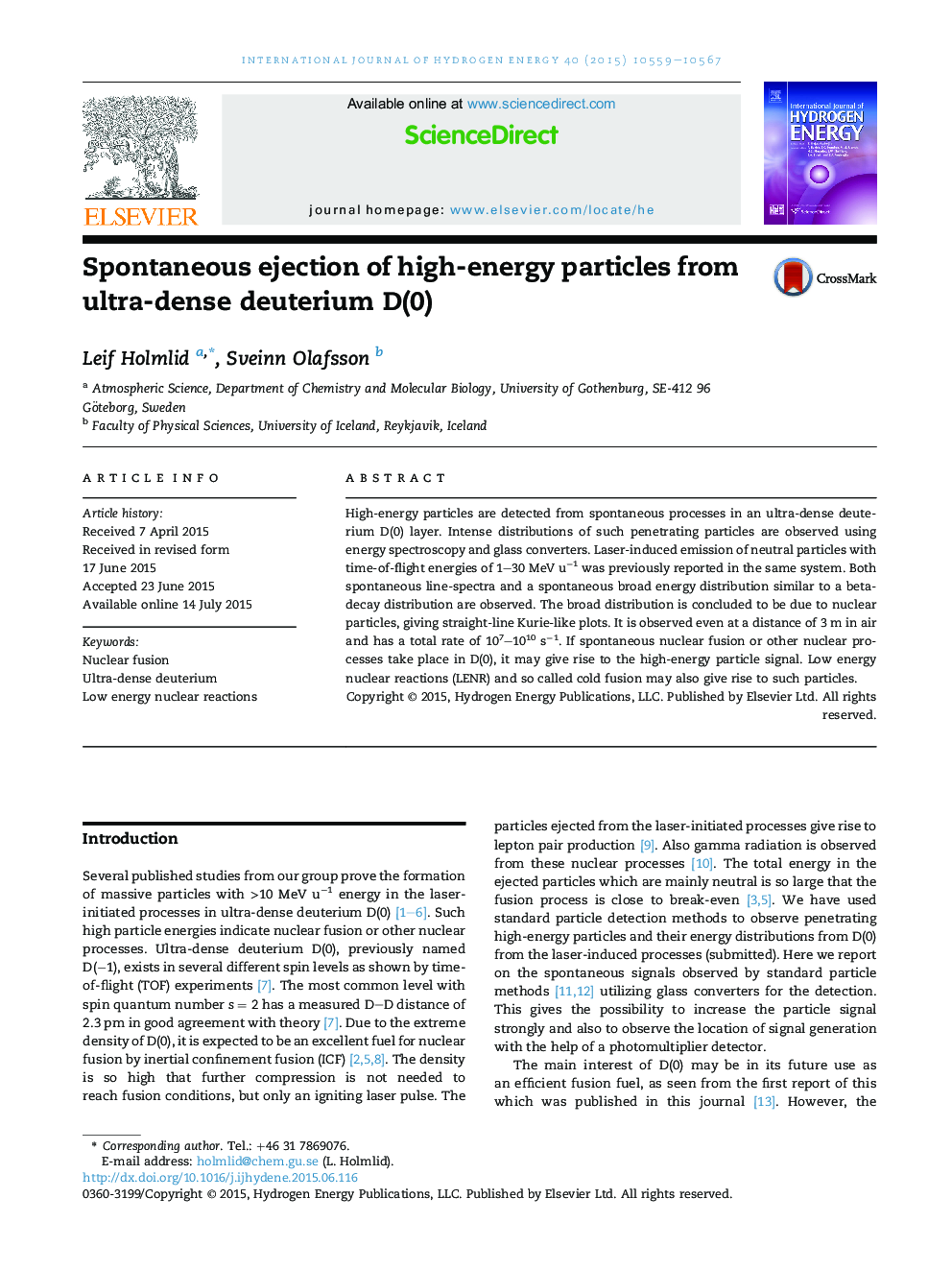| Article ID | Journal | Published Year | Pages | File Type |
|---|---|---|---|---|
| 1279108 | International Journal of Hydrogen Energy | 2015 | 9 Pages |
•Spontaneous high-energy particles from D(0) are detected by energy spectroscopy.•These high-energy unstable particles give linear Kurie plots, indicating beta decay.•The signal due to the unstable particles is strongly increased by glass converters.•Spontaneous line-spectra are observed in the energy spectra.•The signal may be due to spontaneous nuclear processes in D(0).
High-energy particles are detected from spontaneous processes in an ultra-dense deuterium D(0) layer. Intense distributions of such penetrating particles are observed using energy spectroscopy and glass converters. Laser-induced emission of neutral particles with time-of-flight energies of 1–30 MeV u−1 was previously reported in the same system. Both spontaneous line-spectra and a spontaneous broad energy distribution similar to a beta-decay distribution are observed. The broad distribution is concluded to be due to nuclear particles, giving straight-line Kurie-like plots. It is observed even at a distance of 3 m in air and has a total rate of 107–1010 s−1. If spontaneous nuclear fusion or other nuclear processes take place in D(0), it may give rise to the high-energy particle signal. Low energy nuclear reactions (LENR) and so called cold fusion may also give rise to such particles.
Graphical abstractKurie-like plot demonstrating beta decay.Figure optionsDownload full-size imageDownload as PowerPoint slide
